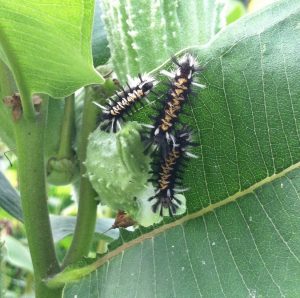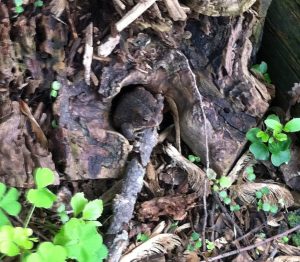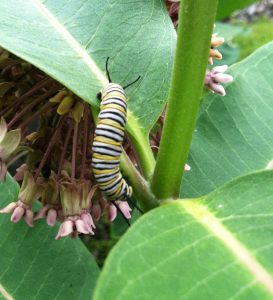
When we became beekeepers we started to become more aware of what nature had going on around us. One of the things we noticed were the other creatures that we share our bee yards with.
We took the first picture and though we were taking pictures of the famed Monarch Butterfly caterpillar. We were happy to see them, but when we looked up information about the fuzzy friend, we found out that we were not correct with our assumption. It is actually the Tussock Moth caterpillar that we were seeing. They like milkweed too! They have a distinctive appearance of alternating bristles and haired projections that makes them hard to miss. But those are not just for looks. Hidden in the fuzziness can be urticating hairs which can cause painful reactions if they come into contact with skin.

We also had a fun visit from the American Toad. He, or she, was hopping along on its way home. We looked down and saw it sitting on a telescoping cover for a while when it was laying on the ground. After a little bit it moved over into a hole in the base of a tree next to where we were working. It definitely kept a keen eye on us.

This next happy little caterpillar is destined to become the Monarch Butterfly.
Although we rarely see Monarch Butterflies anymore due in part to the limited availability of their habitat – the plants of the milkweed family, every once in awhile we do get to see a caterpillar on milkweed at one of the farms we keep bees at. The Monarch may be the most familiar North American butterfly, and it is considered an iconic pollinator species.
Much of the North American Monarch population migrates south in the late-summer/autumn to migration to Florida and Mexico. During the fall migration, monarchs cover thousands of miles, with a corresponding multi-generational return north. There has been a great deal of food and habitat loss that the Monarch needs to survive. Hopefully there will be some work done to help out the pollinators. Especially the Monarch.
Now that the weather is cold, and the bees are put to bed for the winter, we are thinking about all the other creatures we met this year!